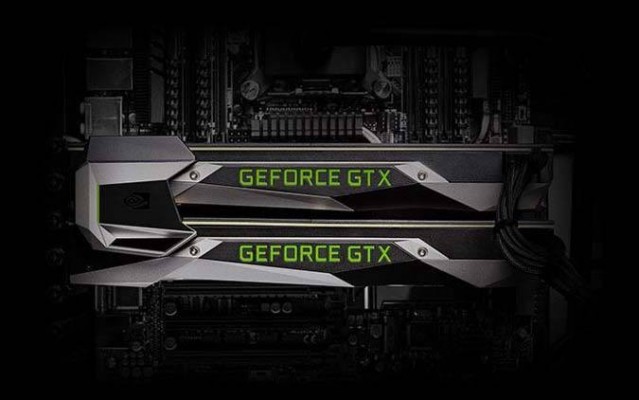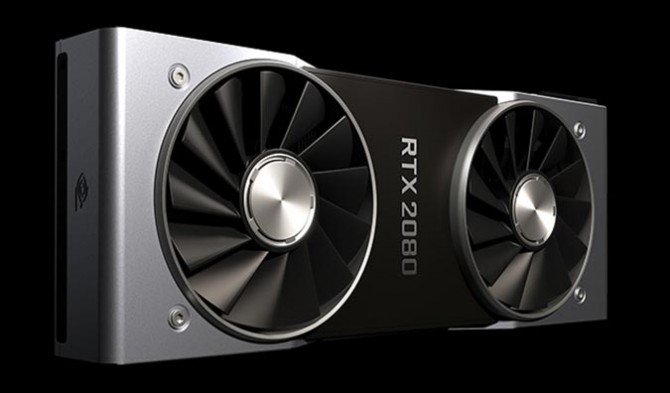Nvidia GeForce GTX 1080 vs. RTX 2080: Which GPU Is Right for You?
Nvidia's hyped-up RTX graphics cards have finally hit laptops, but do they live up to the high standards that the company has set? A performance boost is always welcome, and the concept of ray tracing is incredibly intriguing, but do those perks make it worth spending hundreds of extra dollars on your gaming notebook? That's what we're here to find out.
In order to accurately test the performance difference between an RTX 2080 and a GTX 1080 GPU, we're using the GTX-powered 2018 model of the MSI GT75 Titan and its RTX-powered 2019 successor. They're each outfitted with an overclockable 2.9-GHz Intel Core i9-8950HK processor, 32GB of RAM, a 512GB NVMe PCIe SSD with a 1TB 7,200-rpm hard drive. The only difference between them is in their GPUs: the Nvidia GeForce GTX 1080 with 8GB of VRAM vs. the RTX 2080 with 8GB of VRAM.
Here's how they stack up.
GTX 1080 vs. RTX 2080: Benchmark results
| Row 0 - Cell 0 | GTX 1080 | RTX 2080 | Premium Gaming Laptop Average |
| Rise of the Tomb Raider (Very High, 1080p) | 67 fps | 76 fps | 61 fps |
| Hitman (Ultra, 1080p) | 95 fps | 140 fps | 93 fps |
| Middle-earth: Shadow of War (Ultra, 1080p) | 98 fps | 112 fps | 83 fps |
| Metro: Last Light (Ultra, 1080p) | 80 fps | 95 fps | 62 fps |
Nvidia RTX Features and Price Difference
The two key features that Nvidia's RTX chips boast are ray tracing and DLSS (Deep Learning Super Sampling). Ray-tracing technology allows any source of in-game light to mimic the properties of a light source in real life, resulting in photo-realistic shadows and reflections.
Meanwhile, DLSS is artificial intelligence that actively adjusts the resolution in a game to maximize frame rates in areas where resolution isn't as important and to maximize resolution when the scene calls for it. For example, if you're sprinting in a first-person shooter, you don't need high resolution for a hazy scene, but if you're stopped in the middle of a vibrant forest, the higher resolution will be utilized.
Sign up to receive The Snapshot, a free special dispatch from Laptop Mag, in your inbox.
The GTX version of the GT75 Titan costs $3,999, while the RTX version runs for $4,199, which means you're paying an extra $200 to add some ray tracing and DLSS to your life. However, that price also accounts for an upgrade to a 4K display.
While this technology may very well shape the future of gaming, it's not fully here yet. Ray tracing is currently available in only one game, Battlefield V, and will have support down the line from another 10 games, including Shadow of the Tomb Raider, Metro Exodus and Control. DLSS is also available in Battlefield V and will be supported in 19 more titles, such as Anthem, PUBG and Hitman 2.
RTX may be worth getting solely so you'll be ready for this advanced tech in future games, but are the increased benchmarks worth the purchase now?
Rise of the Tomb Raider
On the Rise of the Tomb Raider benchmark on Very High at 1080p, the RTX 2080 hit 76 frames per second, surpassing the 67 fps from the GTX 1080, which marks a 13.4 percent improvement. The average for premium gaming laptops ($2,000 and up) is 61 fps.
| Row 0 - Cell 0 | GTX 1080 | RTX 2080 | Premium Gaming Laptop Average |
| Rise of the Tomb Raider (Very High, 1080p) | 67 fps | 76 fps | 61 fps |
Hitman
The RTX 2080 scored an impressive 140 fps on the Hitman benchmark (Ultra, 1080p), whereas the GTX 1080 was stuck in the double digits, at 95 fps. MSI's latest GT75 Titan improved over last year's model by a strong 47.4 percent and crushed the 93-fps category average.
| Row 0 - Cell 0 | GTX 1080 | RTX 2080 | Premium Gaming Laptop Average |
| Hitman (Ultra, 1080p) | 95 fps | 140 fps | 93 fps |
Middle Earth: Shadow of War
The GT75 Titan showed a much smaller performance increase of just 14.3 percent on the Middle-earth: Shadow of War benchmark (Ultra, 1080p), as the RTX 2080 ran the test at 112 fps compared to the GTX 1080's 98 fps. However, they both made it past the 83-fps premium gaming laptop average.
| Row 0 - Cell 0 | GTX 1080 | RTX 2080 | Premium Gaming Laptop Average |
| Middle-earth: Shadow of War (Ultra, 1080p) | 98 fps | 112 fps | 83 fps |
Metro: Last Light
On the Metro: Last Light benchmark (Ultra, 1080p), the RTX 2080 nailed 95 fps, soaring over the 62-fps category average and achieving an 18.8 percent increase from the GTX 1080's 80 fps.
| Row 0 - Cell 0 | GTX 1080 | RTX 2080 | Premium Gaming Laptop Average |
| Metro: Last Light (Ultra, 1080p) | 80 fps | 95 fps | 62 fps |
Which Nvidia GPU Should You Get?
When ray tracing and DLSS inevitably make their way across the gaming landscape, the difference between having an RTX or GTX GPU on your gaming laptop will become much more apparent. The problem is we currently don't have even a handful of games that make use of this technology.
Still, with an average 15.5 percent increase in frame rates and the occasional 47.4 percent outlier, RTX graphics offer a solid improvement over GTX — enough so that the RTX 2080 could be worth an extra $200, depending on how much you value the performance boost.
Overall, the RTX 2080 offers more features and a better value than the GTX 1080, especially if you want to future-proof for the next generation of PC games.
Credit: Laptop Mag; Nvidia

Rami Tabari is the Reviews Editor for Laptop Mag. He reviews every shape and form of a laptop as well as all sorts of cool tech. You can find him sitting at his desk surrounded by a hoarder's dream of laptops, and when he navigates his way out to civilization, you can catch him watching really bad anime or playing some kind of painfully difficult game. He’s the best at every game and he just doesn’t lose. That’s why you’ll occasionally catch his byline attached to the latest Souls-like challenge.




